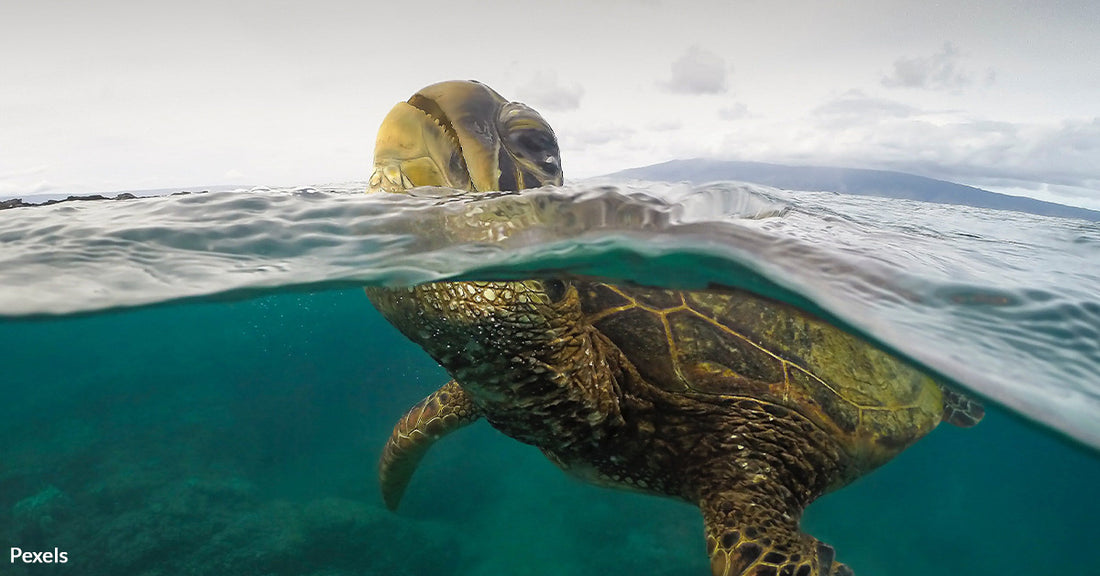Rising Pollution Levels Threaten Green Sea Turtle Populations with Female-Heavy Imbalance
Matthew Russell
In the vast blue of the ocean, a crisis is unfolding silently. The green sea turtles, already grappling with the consequences of climate change, are facing a new, insidious threat: pollution.
Recent studies reveal a disturbing trend: the reproductive habits of these endangered turtles are being significantly altered due to pollution, particularly heavy metals, leading to a disproportionate number of female hatchlings, reports the Washington Post. This imbalance poses a grave risk to their survival.
 Photo: Pexels
Photo: PexelsGreen sea turtles are a species of large marine turtles.
A Disturbing Sex Ratio Imbalance
Green sea turtles, known scientifically as Chelonia mydas, have a unique reproductive trait: their sex is determined by the temperature of the sand in which their eggs incubate. According to the Smithsonian, warmer sands bias the sex ratio towards females, while cooler sands produce more males.
With global temperatures on the rise, this natural mechanism is now tipping dangerously towards a female-heavy population. Alarmingly, certain populations, like those in the northern Great Barrier Reef, are now seeing up to 99% female hatchlings, ABC News reports, a scenario far from normal and sustainable for the species' survival.
 Photo: Pexels
Photo: PexelsAdult green turtles can weigh up to 400 pounds (180 kilograms).
Pollution: A Catalyst for Change
Adding to the woes caused by rising temperatures, researchers have uncovered another contributing factor to the skewed sex ratios: heavy metal pollution.
Studies conducted by teams at institutions such as Griffith University in Australia have demonstrated a correlation between higher concentrations of heavy metals, like cadmium and antimony, in turtle hatchlings and an increased likelihood of them being female, NewScientist reports. These metals, often byproducts of industrial processes, mining, and urban waste, are thought to mimic estrogen, thereby influencing the sexual development of the embryos.
 Photo: Pexels
Photo: PexelsGreen turtles are named for the greenish color of their cartilage and fat.
The Ripple Effect on Turtle Populations
The consequences of this sex imbalance are far-reaching. With an excessive number of females, the chances of finding a mate decrease, threatening the genetic diversity and long-term survival of the species, reports the Washington Post.
This scenario is particularly alarming given the green sea turtle's status as an endangered species. While a temporary increase in female population might suggest a boost in hatchling numbers, the long-term implications are dire, with the potential for more inbreeding and a lack of genetic variation, the Smithsonian reports.
 Photo: Pexels
Photo: PexelsAdult green sea turtles have few natural predators.
Seeking Solutions in Science and Conservation
The findings from these studies not only highlight the extent of human impact on marine life but also underscore the urgent need for mitigation strategies.
Reducing the influx of pollutants into oceans is critical, but there is also great intereste in science-based, long-term strategies to curb the emission of heavy metals from human activities such as mining and urban waste management. Conservation efforts must also focus on protecting and restoring the natural habitats of these creatures, including the beaches where they lay their eggs.
 Photo: Pexels
Photo: PexelsGreen sea turtles are facing a critical threat due to pollution.
A Call to Action
As we confront the consequences of our actions on the planet, the plight of the green sea turtles serves as a poignant reminder of the interconnectedness of our ecosystems. The alarming impact of pollution on these creatures is not just their crisis; it's a reflection of our stewardship of the environment. It's a call to action, urging us to rethink and reshape our practices for a more sustainable and wildlife-friendly future.
Click below and take action for this threatened species!

